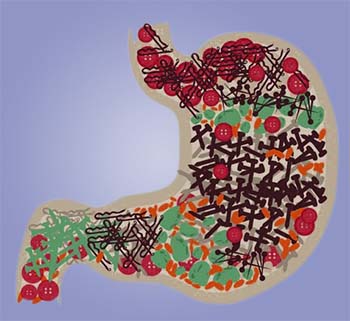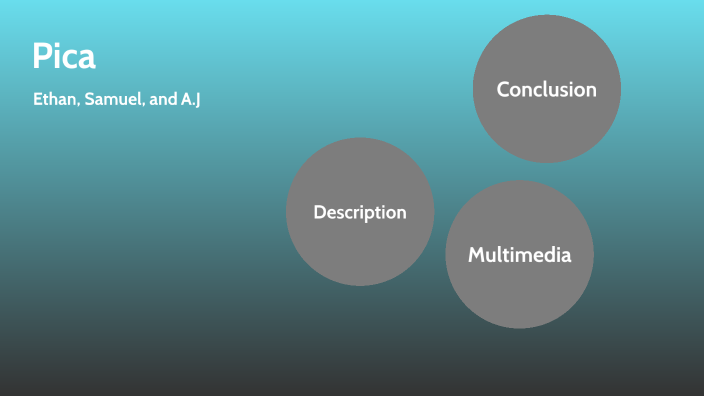

Pica is observed more commonly during the second and third years of life and is considered developmentally inappropriate in children older than 18-24 months. Among individuals with mental disabilities, pica is the most common eating disorder. Children with mental disabilities and autism are affected more frequently than children without these conditions. Pica is reported most commonly in children and in individuals with mental disabilities. The prevalence of pica is unknown, as the disorder often is unrecognized and underreported. Adolescents and adults most often ingest clay or soil. Older children tend to ingest animal droppings, sand, insects, leaves, pebbles, and cigarette butts. Infants and children commonly ingest paint, plaster, string, hair, and cloth. Individuals who have pica have been reported to mouth and/or ingest a wide variety of nonfood substances, including, but not limited to, clay, dirt, sand, stones, pebbles, hair, feces, lead, laundry starch, vinyl gloves, plastic, pencil erasers, ice, fingernails, paper, paint chips, coal, chalk, wood, plaster, light bulbs, needles, string, cigarette butts, wire, and burnt matches. In some cases, a lack of certain nutrients, such as iron deficiency anemia and zinc deficiency, may trigger the unusual cravings. People with bulimia nervosa tend to be overly concerned about gaining weight regardless of their actual weight and body shape.Pica is an eating disorder typically defined as the persistent ingestion of nonnutritive substances for a period of at least 1 month at an age at which this behavior is developmentally inappropriate (after 18-24 months).Ī diagnosis of pica occurs when the behavior is inappropriate to the developmental level of the individual, is not part of a culturally sanctioned practice, and does not occur exclusively during the course of another mental disorder. These actions may include purging, engaging in excessive exercise, taking weight-loss supplements, using laxatives, using diuretics, using enemas, or fasting. These episodes are followed by one or more unhealthy behaviors to try to eliminate the extra calories. People with bulimia nervosa routinely experience a loss of control while eating and consume excessively large amounts of food. This 2011 review also found that 1 in 5 people with anorexia who die take their own life. Issues resulting from self-starvation can be deadly, and anorexia nervosa has the highest mortality rate of any eating disorder, according to research in JAMA. This can lead to a number of health consequences, including anemia, osteoporosis, constipation, low blood pressure, fatigue, menstrual irregularities, infertility, electrolyte imbalances, heart problems, and more. When people severely limit their intake of food, their brain and body don’t get an adequate supply of the nutrients necessary for healthy functioning. People with anorexia nervosa tend to have intense fear about gaining weight, and they severely limit the amount of food they eat. It is believed that extreme dieting or starvation changes the brain in ways that may make a person more prone to continue unhealthy eating patterns.Īnorexia nervosa is an eating disorder in which people have a distorted body image and view themselves as overweight or obese even though they may be significantly underweight.

Having low self-esteem or being a perfectionist may also contribute to eating disorders. Research suggests that some people are more vulnerable to developing an eating disorder due to family history, exposure to trauma, harmful thinking patterns, and brain abnormalities. Mental health conditions commonly seen in people with eating disorders include: In fact, one study of over 2,400 people with an eating disorder found that 97% of them had at least one co-existing psychiatric problem. It is very common for people with eating disorders to have co-existing mental health conditions. In addition, athletes who compete in sports where there is an emphasis on body type, weight, or appearance are at risk for eating disorders. In fact, it is estimated that 1 in 3 people with an eating disorder is male, but they are much less likely to seek treatment. However, men can suffer from eating disorders too. Eating disorders are more prevalent in women, and they often begin during adolescence or young adulthood.

Hormone Evaluation and Replacement TherapyĪt least 30 million Americans struggle with an eating disorder.Marital Conflict and Relationship Issues.


 0 kommentar(er)
0 kommentar(er)
